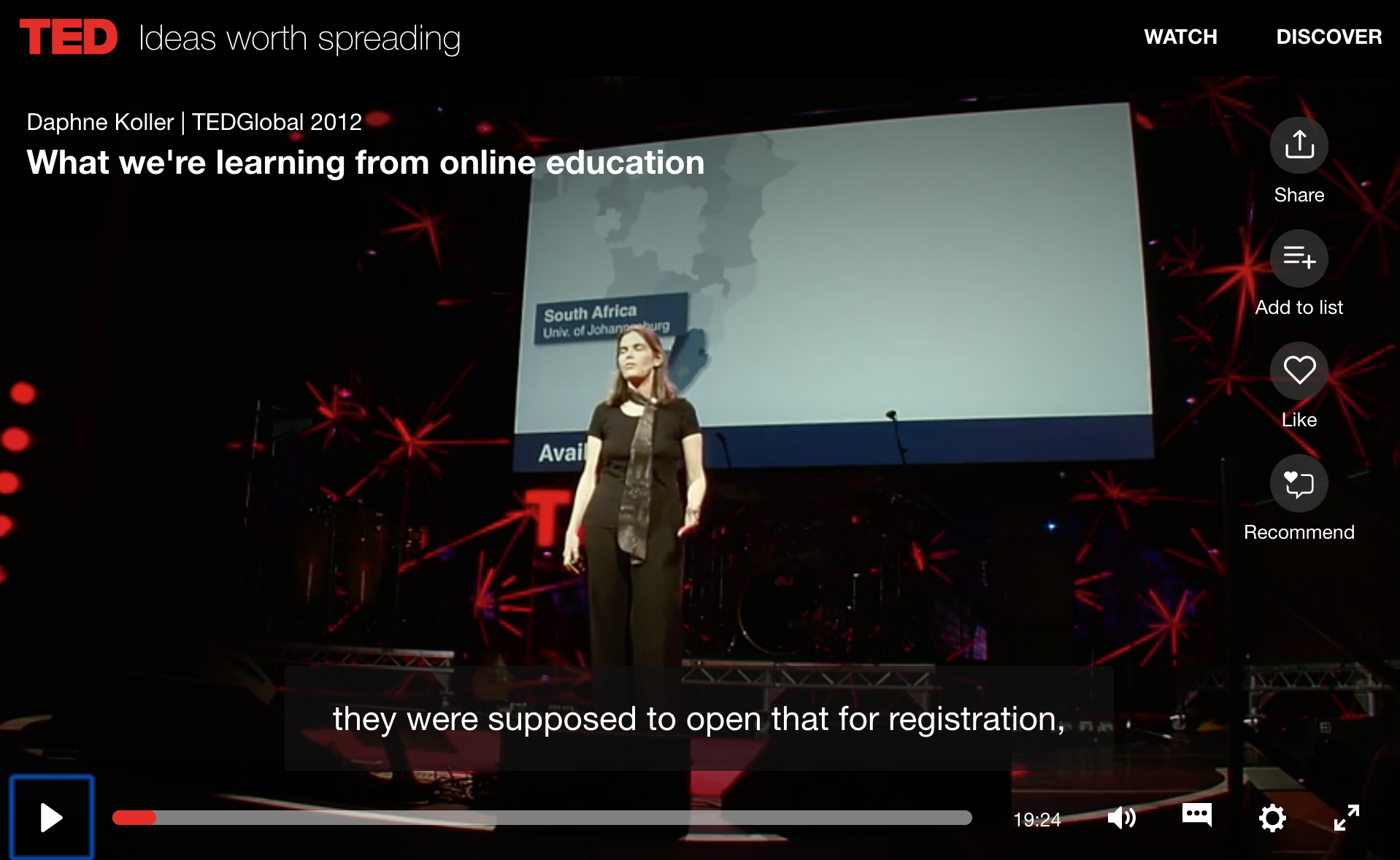Chapter 5: MOOCs
5.1 Brief history

To see this YouTube video, click on the graphic. For a response to this video, see: ‘What’s right and what’s wrong with Coursera-style MOOCs’.
![]()
The term MOOC was used for the first time in 2008 for a course offered by the Extension Division of the University of Manitoba in Canada. This non-credit course, Connectivism and Connective Knowledge (CK08) was designed by George Siemens, Stephen Downes and Dave Cormier. It enrolled 27 on-campus students who paid a tuition fee but was also offered online for free. Much to the surprise of the instructors, 2,200 students enrolled in the free online version. Downes classified this course and others like it that followed as connectivist or cMOOCs, because of their design (Downes, 2012).
In the fall of 2011, two computer science professors from Stanford University, Sebastian Thrun and Peter Norvig, launched a MOOC on The Introduction to AI (artificial intelligence) that attracted over 160,000 enrollments, followed quickly by two other MOOCs, also in computer sciences, from Stanford instructors Andrew Ng and Daphne Koller. Thrun went on to found Udacity, and Ng and Koller established Coursera. These are for-profit companies using their own specially developed software that enable massive numbers of registrations and a platform for the teaching. Udacity and Coursera formed partnerships with other leading universities where the universities pay a fee to offer their own MOOCs through these platforms. Udacity in 2013 changed direction to focus on the vocational and corporate training market.
The Massachusetts Institute of Technology (MIT) and Harvard University in March 2012 developed an open source platform for MOOCs called edX, which also acts as a platform for online registration and teaching. edX has also developed partnerships with leading universities to offer MOOCs without direct charge for hosting their courses, although some may pay to become partners in edX. Other platforms for MOOCs, such as the U.K. Open University’s FutureLearn, have also been developed. Because the majority of MOOCs offered through these various platforms are based mainly on video lectures and computer-marked tests, Downes has classified these as xMOOCs, to distinguish them from the more connectivist cMOOCs.
In March, 2019 there were more than 11,000 MOOC courses from 900 universities globally, with just over 100 million registrations (Shah and Pickard, 2019). The big change in 2017-2018 was a move to MOOC-based degrees, with seven universities announcing 15 degrees in 2017, and in 2018, 30 more universities joined in, and launched more than 45 degrees (Johnson, 2019).
In addition to full degrees, EdX and Coursera both offer multiple micro-credentials, each with their own branding. Overall, 630 micro-credentials existed at the end of 2018, but most of the new credentials came from just two credentials, Coursera specialization, and edX professional certificate (Johnson, 2019).
References
Downes, S. (2012) Massively Open Online Courses are here to stay, Stephen’s Web, July 20
Johnson, S. (2019) Much ado about MOOCs: Where are we in the evolution of MOOCs? Edsurge On Air, 26 February
Shah, D. and Pickard. L. (2019) Massive list of MOOC providers around the world Class Central, 30 July

